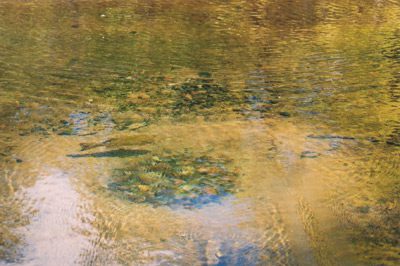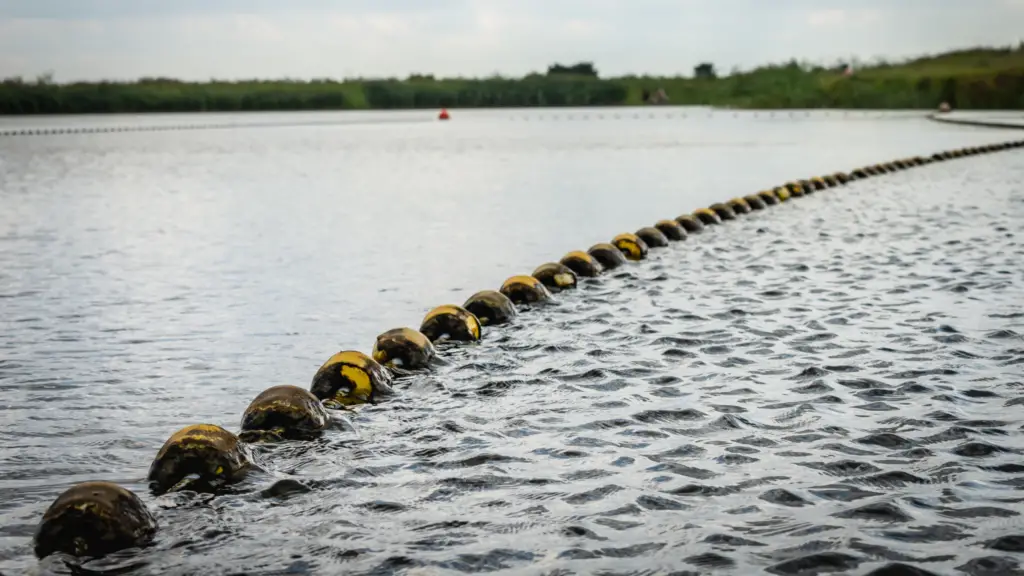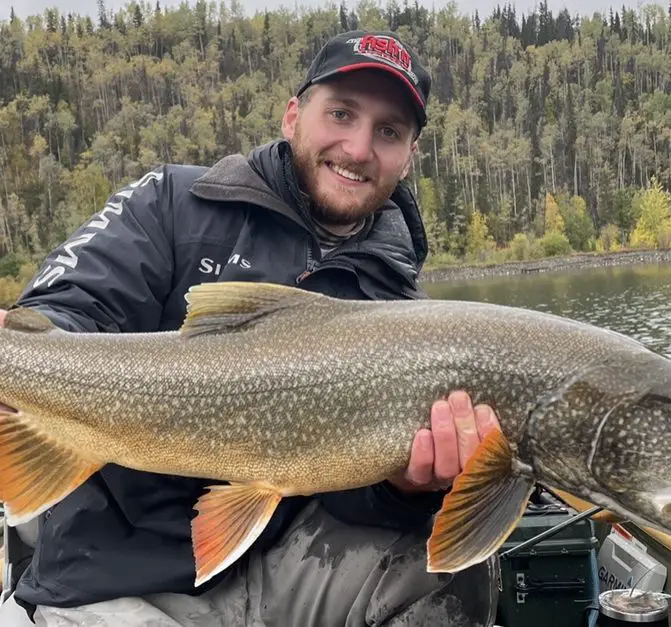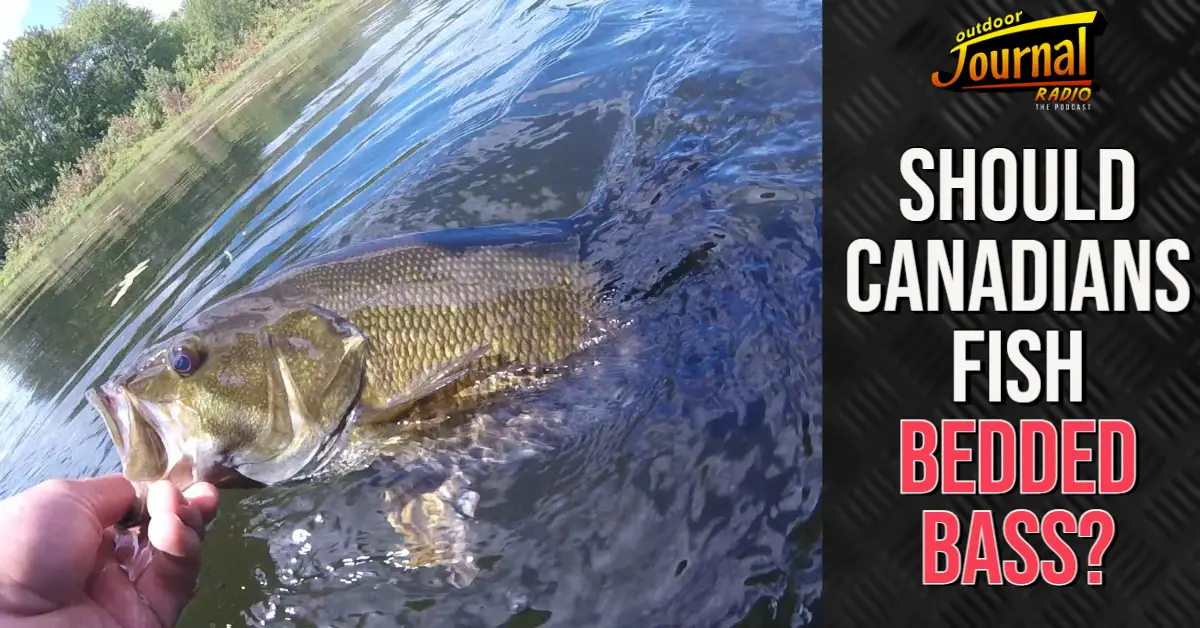Growing up in Southern Ontario, having to wait until late June to fish for bass has become somewhat of an accepted reality, occupying my time with pike fishing and turkey hunting until the long-awaited opening day.
A few seasons ago, however, things were a bit different, as my guiding position at a lodge in Northern Ontario allowed me to bass fish all spring and summer due to much more lenient regulations and a year-round catch and release season on Smallmouth Bass. This ability to fish both pre-spawn and spawning bass began raising questions from many of my clients around the issue of bed fishing and has led me to consider my own ethics surrounding the issue and how our actions may actually be affecting the bass populations that we fish here in the north.
What is Bed Fishing?

Before getting into the messy subject of whether bed fishing is ethical or not, a definition of the act is probably necessary.
Bed fishing is essentially the intentional targeting of bass on their spawning grounds. During spawning season, which varies based on location, male bass create nests used for egg fertilization, enticing females to the area and then actively protecting these eggs and larvae from predation.
During this time, male fish are hardwired to attack anything that approaches these nests that may threaten the hatch, often even forgoing eating for the entire spawning period in order to avoid cannibalizing the hatching fry. While these fish may not be feeding, they are rather easy to catch due to their aggressiveness during this time period, allowing anglers to target bass with a variety of baits that intrude on the protective fish’s territory. This style of fishing is often referred to as “sight fishing”, due to both the contentiousness of the term “bed fishing”, as well as the literal ability to spot and target both the fish and their beds in clear water.
The Issue with Bed Fishing
Bed fishing may be an extremely productive way to fish for bass, but it is widely agreed upon that it is probably not great for the overall health of our bass populations.
This damage to bass populations is primarily due to predation from species such as Bluegill, Shiners, and Northern Pike; preying on bass fry, larvae, and eggs that are left unguarded by angling pressure and harvest. Though some say this problem can seemingly be solved by catch-and-release fishing, it has been well-established that catching these protective males can open up large enough windows to allow for predation to occur, exhaust the fish to a point where they can no longer defend, as well as abandon the nest altogether if they are released in a different area than they are caught, which is often the case in tournament fishing.
Anecdotal, and perhaps coincidental, as it may be, this is something that I have witnessed firsthand while fishing near beds with clients a few seasons ago. The lake we fished contained primarily Smallmouth Bass, as well as a small population of Northern Pike that are controlled to maintain the trophy status of the fishery. When fishing for these aggressive smallmouth, it was rather apparent that virtually no pike were present in the area while the bass were defending their nests. As the day went on, however, and the beds were fished more heavily, the rate at which we would both spot and catch pike in these spawning grounds went up dramatically. This resulted in us going from catching nothing but smallmouth during the morning, to catching over ten pike in the afternoon in the exact same area.
Why Canada is Unique
Canadians in regions that limit the fishing of bass until after their spawning period, myself included, often get frustrated by the limitations of our bass season compared to that of the United States, which for many people in the Great Lakes region is a mere boat ride away. However, the closure is well warranted, especially here in the north.
The subject of bed fishing has been heavily researched across both Canada and the United States due to growing concerns over the resource for both its intrinsic and monetary value. Research done at the University of Illinois, for example, while proving that bed fishing contributes highly to bass egg and larvae loss, also showed that the impacts of bed fishing are far greater in the north and may even be detrimental to some northern bass populations.
This difference in sensitivity is based on the rate of bass maturity in different geographical regions, with southern bass maturing at roughly two years of age and northern bass not maturing until roughly four. This slow maturation of northern fish makes them much more susceptible to predation and angling pressure, resulting in large population reductions when pressure during spawning season is high.
Despite these data, governments still have a great deal of difficulty proposing closed seasons due to pressure from angling communities and tournament organizations.
An Alternative Solution

As someone who has lived with bass fishing restrictions their entire life, I feel as though waiting until late June to bass fish is bearable enough to have it put in place nationwide should it protect our bass fisheries. That being said, an interesting alternative occurred to me when Rainbow Trout fishing in British Columbia that I thought might be a compromise for bass fishermen and government organizations.
The particular lake I was fishing was classified as trophy waters for rainbows, making the lake extremely valuable to anglers, local business, and their government. In order to protect this valuable population, recognized spawning grounds were closed for portions of the seasons where the fish might be most sensitive to angling pressure. This system worked rather well in the area I was fishing, allowing anglers to fish the straggling or spawned out fish outside of the area while leaving the spawning population alone for the benefit of the overall population.
I feel as though this would be achievable in bass fisheries throughout Canada as bass spawning grounds are easily identifiable and would be fairly easy to close for the short period of time in which they are actively spawning. This closing of areas would benefit not only the bass populations, but also recreational and tournament anglers who would be able to enjoy a much longer season despite the sensitive areas being closed for a portion of it.
However, due to a lack of enforcement and the enormity of our province, this method of protecting areas rather than closing seasons is perhaps far from becoming a reality. For this reason, for now, I feel as though the majority of the responsibility should be put on anglers, lodges, and tournament organizations to avoid these areas whenever possible when fishing in these sensitive northern fisheries, a notion that is much easier said than done when tournament payouts and guide salaries are on the line.






One Response
Excellent article; I fully agree that bed fishing should not be allowed.